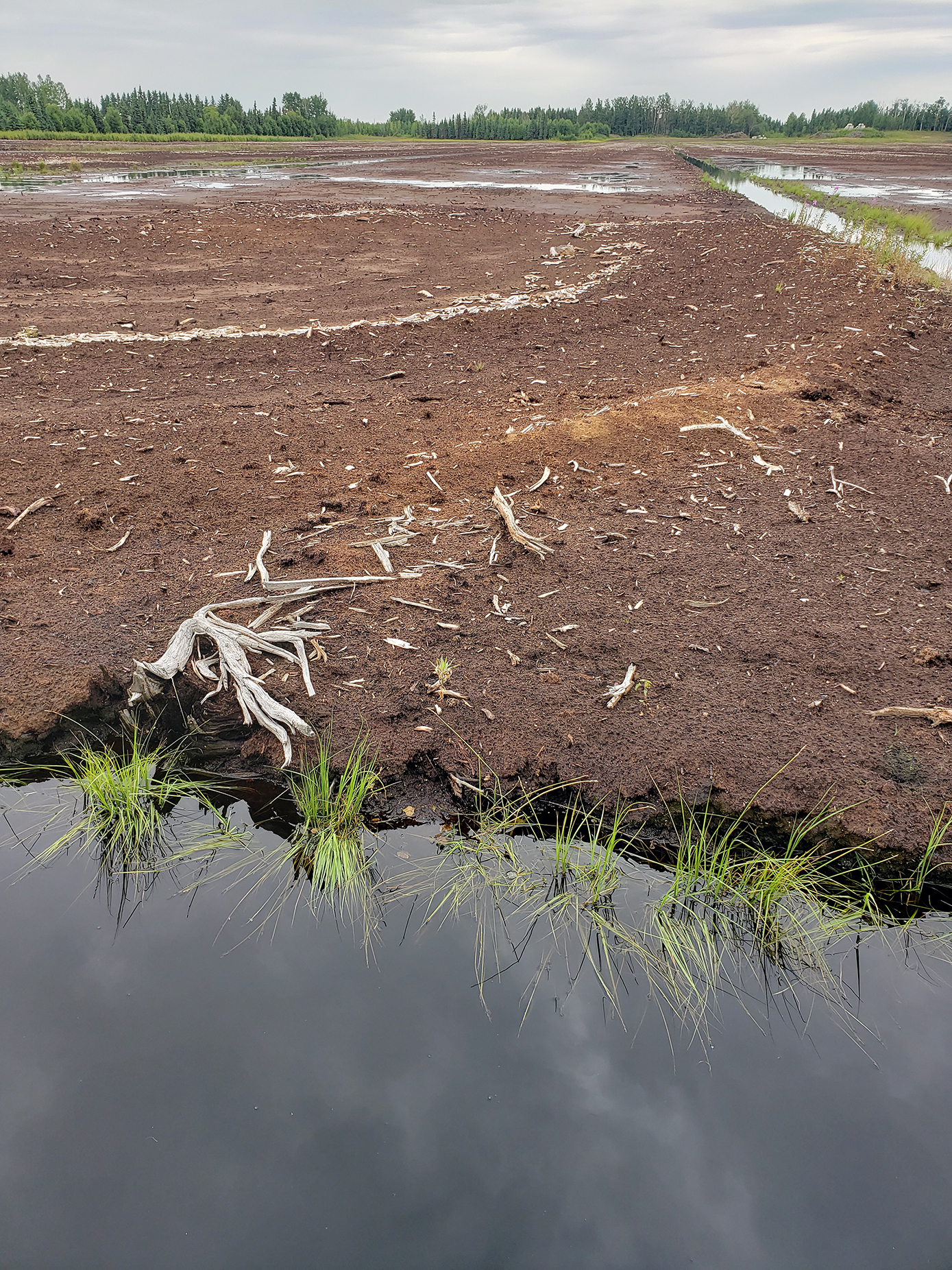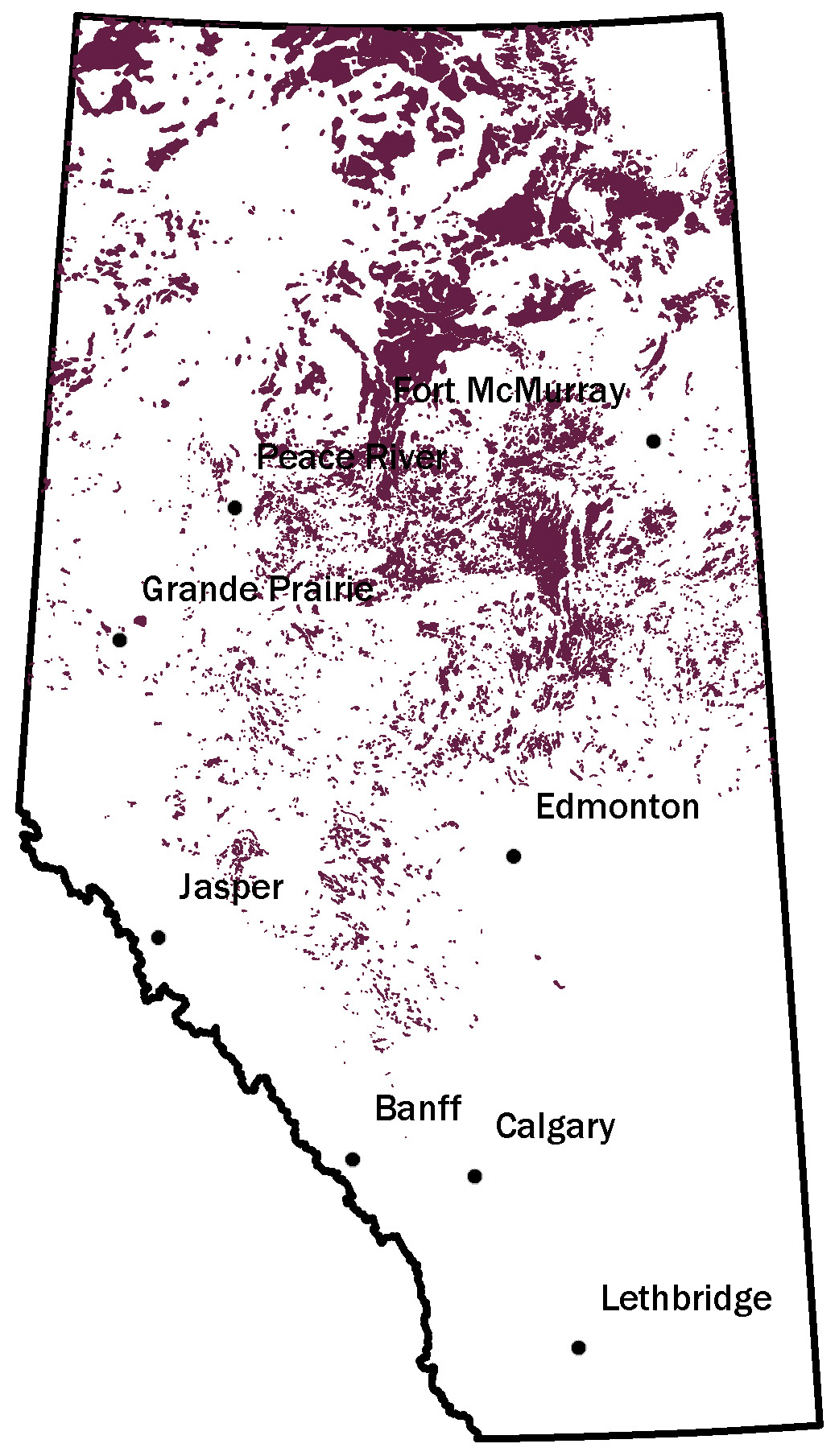![]()

Layers of peat over 4700 years old are found below ground at Wagner Natural Area, Alberta

Commercial peat operation north of Berrymoor, Alberta
Composition
Peat is made of decomposing organic matter, water, gases, and minor amounts of minerals. Molecules containing carbon, hydrogen, oxygen, and nitrogen, the building blocks of life, are abundant. When dry, peat contains up to 50% organic matter. When wet, peat may contain up to 80% water. Species of plants and mosses may still be identifiable in peat unless the organics have been highly decomposed.
Age and Formation
Peat forms in boreal and sub-arctic regions from the decomposition of layers of vegetation and other organic matter in poorly drained bogs and wetlands. In northern Alberta, some bogs have been accumulating peat for over 10000 years
Important properties
Peat is rich in organic material and carbon, holds moisture, can filter pollutants, provides nutrients to plants, and is abundant and accessible at the Earth’s surface.
Uses
Peat is used to improve the growing conditions of soil, including: moisture and fertilizer retention, nutrient composition, and porosity. In some countries, peat is burned for cooking and heating homes, or providing energy to industries. Potable water may be produced from peatlands. Peat may record historic environmental events and sometimes hosts well preserved anthropologic artifacts and burials. Peatlands within traditional territories of indigenous peoples are for hunting, gathering, cultural, and other traditional activities. Much carbon is stored in peatlands; if dried, or burned, this carbon is released into the atmosphere contributing to climate change. Alberta produces peat for horticultural purposes.
It’s a Fact!
Whiskey made from malted barley roasted over a peat fire has a “peaty” taste. Whiskey peatiness is measured in parts per million of the organic compound phenol.
Discover!
UAlberta Researchers Help Measure Toxic Lead in Peat Over Time
Where to find peat
